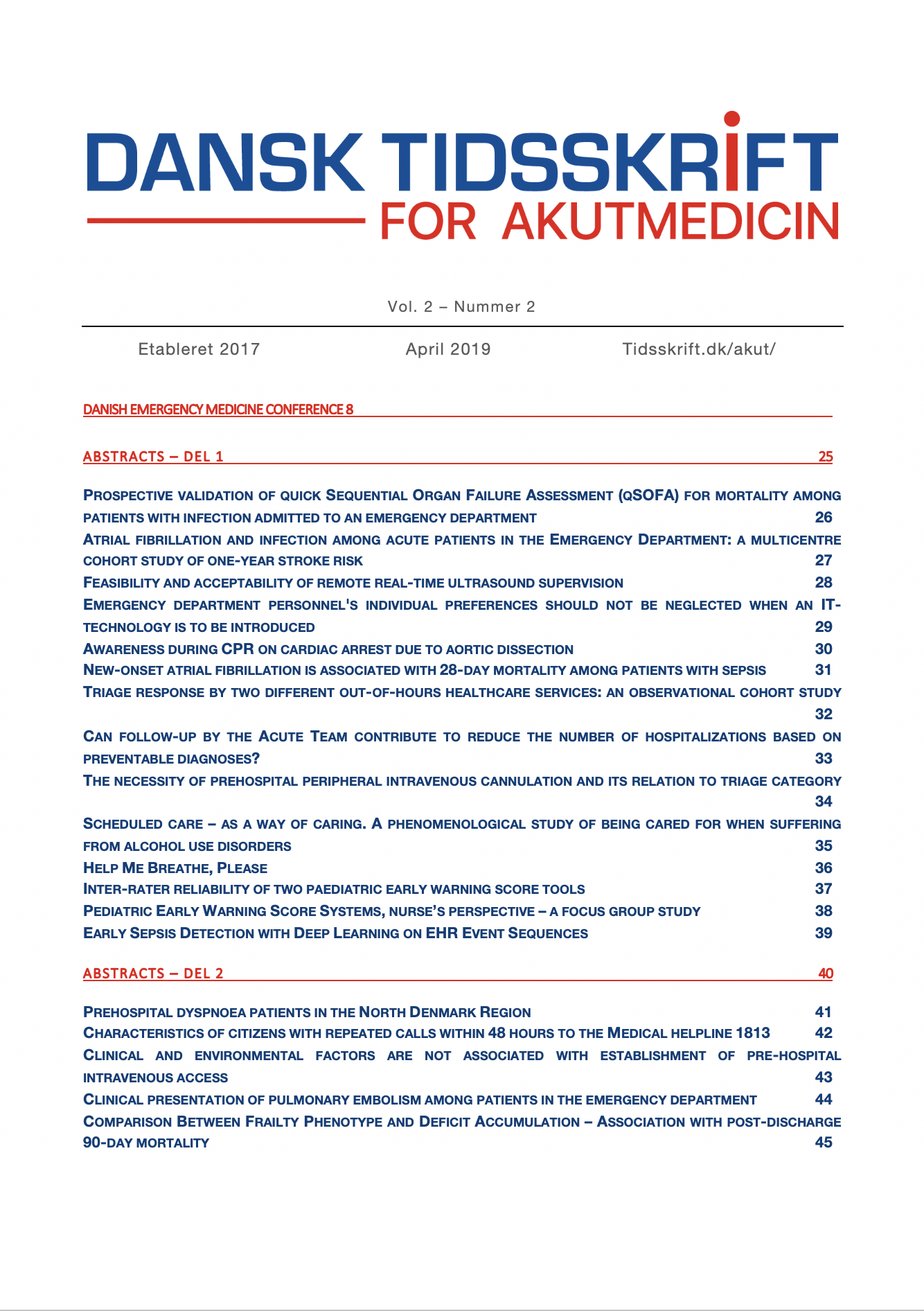Resumé
Background: In 2017, 2829 hospitalizations were based on preventable diagnoses in the municipality of Aarhus, Denmark. Even though the Acute Team provides emergency examination visits and hereby contributes to early intervention and thus reduces the number of hospitalizations based on preventable diagnoses in the municipality of Aarhus, Denmark, we found that citizens were hospitalized even after this intervention. Our hypothesis was that a systematic follow-up of all emergency examination visits provided by the Acute Team could reduce the number of hospitalizations based on preventable diagnoses.
Methods: A systematic follow-up of all emergency examination visits provided by the Acute Team from January 2018 to March 2018 was initiated by telephone interviews or follow-up visits. Subsequently, a comparative study was made based on reviews of the citizens’ health care records. In this study records from January 2017 to March 2017, where no follow-up was initiated, were compared with records from the follow-up period. The citizens’ health care records were reviewed to find out whether the citizens were hospitalized within 7 days after the emergency examination visits or not, and if the hospitalization was based on a preventable diagnosis. In this process the definition of preventable diagnoses made by the National Board of Health, Denmark, was used [1].
Results: 294 emergency examination visits were made from January 2017 to March 2017. Of these, 30 led to hospitalizations based on preventable diagnoses, i.e. a hospitalization rate of 10.2%. 433 emergency examination visits were made in the period January 2018 to March 2018. Of these, 17 led to hospitalizations based on preventable diagnoses, i.e. a hospitalization rate of 3.9%. By comparing the data from 2017 and 2018 a reduction of 6.3% was found, which indicates that 27 hospitalizations were prevented.
Conclusions: Our findings indicate that Acute Team´s systematic follow-up of emergency examination visits can contribute to reduce the number of hospitalizations based on preventable diagnoses. Such follow-up may benefit early municipal intervention by detecting early symptoms of illness.
Referencer
Licenseret under en Creative Commons Kreditering 4.0 International-licens (CC BY 4.0).
© Forfatterne.

